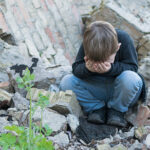- Articles, CBRNE, Critical Infrastructure, Emergency Management, Emergency Medical Services, Fire, Hazmat, Public Health, Transportation
- Jillian Ritter
Many families depend on child care providers to care for their children so parents can work and go to school. The National Survey of Early Care and Education estimates that 118,000 listed providers care for more than 750,000 children between birth and 5 years of age in home-based settings. Home-based child care, also referred to as family child care, is care provided in a home setting for a smaller group of children (usually under 12 children). Parents often choose family child care because of the appeal of a home-like environment, smaller group sizes, and greater opportunity for flexible hours. Listed child care means they appear on state or national lists of early care and education services, such as licensed, regulated, license-exempt, or registered home-based providers.
Infants and toddlers (children between the ages of birth and 3 years old) account for approximately 375,000 of the children in family child care (author’s calculation based on analysis of 2012 National Survey of Early Care and Education, Home-Based Public Use Data File, ICPSR 35519-0009). Infants and toddlers are especially vulnerable in emergencies, and helping them get to safety in emergencies requires extra planning and preparation. This is because children between birth and age 3 have unique needs, such as:
- Reliance on caregivers for physical, nutritional, and emotional needs
- Communication limitations
- Limited mobility
- Need for safety and protection from harmful items
- Greater susceptibility to hazards, including chemicals and smoke
Family child care providers, especially those who care for infants and toddlers, may need additional supports in order to provide for children’s health and safety during disasters and emergencies. These providers are often the sole caregiver responsible for multiple children without the help of other adults. While many child care centers have a backup plan where extra staff (e.g., kitchen staff, office staff) go to the infant and toddler rooms in order to assist with evacuation, family child care providers often must evacuate on their own or rely on help from older children or neighbors.
Family child care providers also may lack the financial resources of centers needed to purchase materials to help them better prepare for emergencies. They also often do not have the resources or time to do a lot of planning, including planning for emergencies.
Infant Toddler Evacuation Survey
Little research has been focused on this topic in the past. Because of this, in 2018, Child Care Aware® of America surveyed early learning professionals from across the United States, asking them to share information about how they evacuate infants and toddlers in their care. Almost one in every five survey participants shared that they have had to evacuate infants and toddlers in an emergency.
More than 2,200 child care providers participated in the survey, and about half of the survey participants identified themselves as family child care providers. Although many emergencies requiring evacuation were shared, the most common were: fire, fire alarms, or smoke; gas leaks or gas smell; or severe weather. Survey results highlighted strengths and weaknesses of child care emergency preparedness. Family child care providers identified the most challenges, primarily attributed to lack of staff and lack of resources.
Toddlers can pose an extra challenge as they are often unpredictable and can react with fear to an emergency alarm. Although they are often mobile, they may not follow directions as well as older children and can be difficult to keep together. In addition, due to the constant growth and development of infants and toddlers, written emergency plans must be updated often to ensure they meet the children’s changing needs.
Evacuation Methods & Emergency Supplies
When looking at how child care providers plan to evacuate infants and toddlers, the differences between family child care and child care centers was noticeable. Evacuation cribs were identified in the survey as the most helpful tool used during an actual emergency evacuation because they can be used to evacuate multiple children at once. Despite this, only 17% of family child care providers have an evacuation crib available (this number includes portable cribs with wheels, which are not intended for evacuation), while 85% of child care centers use evacuation cribs. The lack of emergency cribs or other evacuation method among family child care providers can pose a challenge during an evacuation.
While it may not be a problem to carry children to safety in an evacuation drill, it might be difficult in an emergency where an extended evacuation or relocation is necessary. About 54% of family child care providers mentioned carrying children to evacuate, compared to only 13% of child care centers.
Of the providers who plan to carry children, 89% of family child care providers use that as their only method of evacuating infants; few have other methods to use as well. Only 27% of child care centers who carry infants to evacuate use it as their only evacuation method. The majority use it as backup in addition to other methods (see Figure 1). One family child care provider noted in the survey that she had to make two trips to evacuate the infants and toddlers in her care during an emergency because she had no way to evacuate multiple children at once and had to carry them.

Fig. 1. Evacuation method: Carrying children, n = 717 child care center and 442 family child care (Source: Child Care Aware® of America, 2018).
Another notable difference is the number of survey participants who plan to have toddlers walk to evacuate. More than half of family child care providers plan to have toddlers walk to evacuate in an emergency. Child care centers are more likely to have evacuation cribs or other methods available to evacuate toddlers. As previously noted, due to their stage of development, toddlers can pose a challenge in an evacuation, so it could be difficult to keep children together in an emergency evacuation if walking is the only method available.
When asked about emergency supplies, just over half of family child care providers had an emergency supply kit ready, the same as child care centers. Of those that do not have an emergency supply kit ready, a higher number of other family child care providers shared that they do not have any emergency supplies prepared at all. Family child care providers were also less likely to bring emergency information (such as emergency contact information or medical forms) when evacuating or practicing evacuation drills.
Next Steps
Many survey participants shared that they would welcome any resources or support available to improve their emergency preparedness efforts. Trainings, videos, and webinars about best practice in evacuating infants and toddlers were specifically mentioned. Some family child care providers shared the need for assistance in determining the types of practice drills they should complete.
Because purchasing necessary emergency preparedness materials can be cost prohibitive for family child care providers, resources need to be identified to assist them with these purchases. Items such as evacuation cribs or strollers/buggies can be expensive, so assistance in acquiring such items would be helpful to many family child care providers.
Community partnerships can help to provide support and resources for family child care providers. One family child care provider shared that they did not receive notification of an emergency because emergency officials did not know the home was also a business that cared for children. Partnerships with emergency management officials and first responders could help ensure that those responding to emergencies know where family child care businesses are located. These collaborations also have the potential to make additional training and resources available to family child care providers.
Information & Resources
If family child care providers are equipped with information and resources, they can be better prepared to keep infants and toddlers safe in the event of an emergency or disaster. Emergency management and first responders are a community resource that can make a big difference when it comes to providing support for family child care providers. The local Child Care Resource & Referral Agency can provide information about child care and help make connections with child care providers.
Child Care Aware® of America used the information gained from the infant toddler evacuation survey to develop resources for child care providers that can be found here. For more information on child care and child care emergency preparedness, visit childcareprepare.org.
The Child Care Aware® Emergency Preparedness team can be reached at preparedness@usa.childcareaware.org.

Jillian Ritter
Jillian Ritter is a Data Analyst for Child Care Aware® of America and a member of their Emergency Preparedness Team. Her professional service includes more than 20 years in the early childhood care and education field in a variety of roles. She has a master’s degree in youth development and a bachelor’s degree in child development.
- This author does not have any more posts.






